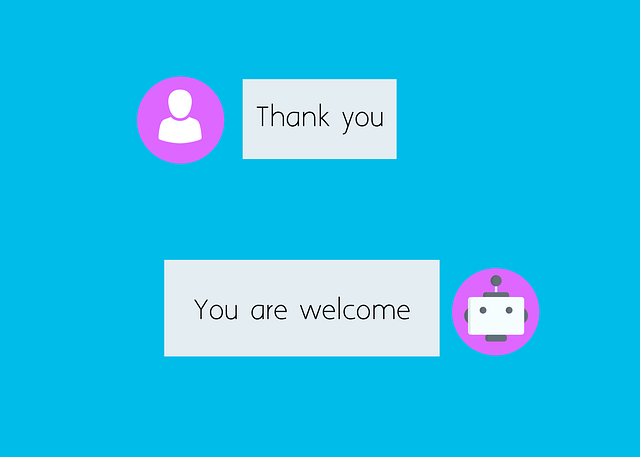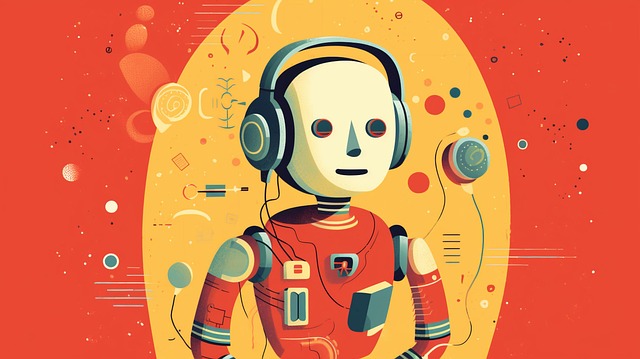In competitive free AI chatbot market, measuring performance through Key Performance Indicators (KPIs) is essential for success and optimization. KPIs like engagement rates, conversion ratios, and average session durations help track chatbot effectiveness in customer support or sales. Metrics such as first-contact resolution rate, lead generation, response time, sentiment analysis, and user satisfaction scores ensure chatbots deliver on promises, enhancing experiences and outcomes. Continuous refinement based on these KPIs keeps free AI chatbots competitive, providing personalized assistance across industries.
In the rapidly evolving landscape of conversational AI, understanding and tracking key performance indicators (KPIs) for chatbot success is paramount. This article guides you through the essential metrics, specifically tailored for both traditional and free AI chatbots. We’ll explore how to measure user engagement, optimize performance, and make data-driven decisions that drive chatbot excellence. From interaction rates to customer satisfaction scores, discover the KPIs that matter most for enhancing your free AI chatbot’s impact.
- Understanding Chatbot KPIs: The Metrics That Matter
- Key Performance Indicators for Free AI Chatbots
- Tracking User Engagement with Chatbot KPIs
- Optimizing Chatbot Performance through KPI Analysis
Understanding Chatbot KPIs: The Metrics That Matter

In the realm of free AI chatbots, measuring performance is key to success. Chatbot KPIs (Key Performance Indicators) provide insights into how effectively a chatbot interacts with users and accomplishes its tasks. These metrics go beyond simple user satisfaction, delving into specific areas like engagement rates, conversion ratios, and average session durations. By tracking these KPIs, businesses can identify areas for improvement and ensure their free ai chatbots deliver on their promises.
Understanding which metrics matter most depends on the chatbot’s purpose. For example, a customer support chatbot might prioritize first-contact resolution rate, while a sales chatbot could focus on lead generation and conversion. Core metrics like message volume, response time, and accuracy offer a broad view of performance. However, it’s also crucial to consider more nuanced indicators such as sentiment analysis results and user satisfaction scores to gain a deeper understanding of how users perceive their interactions with the free ai chatbots.
Key Performance Indicators for Free AI Chatbots

When evaluating the performance of free AI chatbots, several key metrics stand out as essential KPIs (Key Performance Indicators). The first is user engagement, which can be measured through interaction rates—how frequently users initiate conversations and complete them. High engagement suggests that the chatbot provides valuable assistance, leading to increased user satisfaction. Conversation length is another critical indicator; longer interactions often signal a more complex and engaging dialogue, indicating that users find the chatbot helpful for deeper queries.
Moreover, the ability of free AI chatbots to understand and respond accurately to a wide range of user inputs is paramount. This can be assessed through metrics like intent recognition accuracy and entity extraction success rates. High accuracy in these areas demonstrates the chatbot’s effectiveness in comprehending user needs, thereby enhancing its perceived intelligence and utility. Additionally, monitoring the number of successful task completions—whether it’s providing information, booking a service, or assisting with a purchase—is vital to understanding the chatbot’s operational efficiency.
Tracking User Engagement with Chatbot KPIs

Tracking user engagement is vital for understanding the performance and impact of a chatbot, especially with the rise of free AI chatbots. Key Performance Indicators (KPIs) specific to chatbot interactions provide valuable insights into user satisfaction, behavior, and overall value derived from the conversation. Metrics such as average conversation length, message volume, and response time offer a glimpse into user experience. For instance, longer conversations might indicate more complex queries or higher user interest, while rapid response times contribute to a positive user perception.
Furthermore, tracking repeat usage and user retention rates can reveal the effectiveness of a chatbot in building long-term engagement. Free AI chatbots that successfully engage users are likely to see increased interaction over time, as users return for more personalized and efficient assistance. By closely monitoring these KPIs, developers and businesses can continuously refine and improve their chatbot’s performance, ensuring it remains competitive in the dynamic landscape of conversational AI.
Optimizing Chatbot Performance through KPI Analysis

In today’s digital age, free AI chatbots have become a game-changer across various industries. To ensure these virtual assistants deliver optimal performance, key performance indicators (KPIs) play a pivotal role in measuring and analyzing their effectiveness. By setting clear KPIs, businesses can identify areas of improvement and make data-driven decisions to enhance chatbot capabilities. These metrics can range from user satisfaction scores to response accuracy and conversation length.
Regular KPI analysis allows developers to fine-tune chatbot algorithms, improve natural language processing, and tailor responses to user needs. As the technology behind free ai chatbots evolves, this ongoing assessment is crucial for maintaining high standards of performance. It helps in understanding user interactions, identifying common issues, and ultimately, creating a seamless experience that drives business growth.
Chatbots, especially free AI chatbots, have become indispensable tools in enhancing user engagement and driving business growth. By tracking and analyzing key performance indicators (KPIs), businesses can optimize their chatbot strategies effectively. Understanding metrics like user satisfaction, response accuracy, and conversation duration allows for continuous improvement, ensuring these virtual assistants deliver exceptional experiences to users interacting with free AI chatbots.
